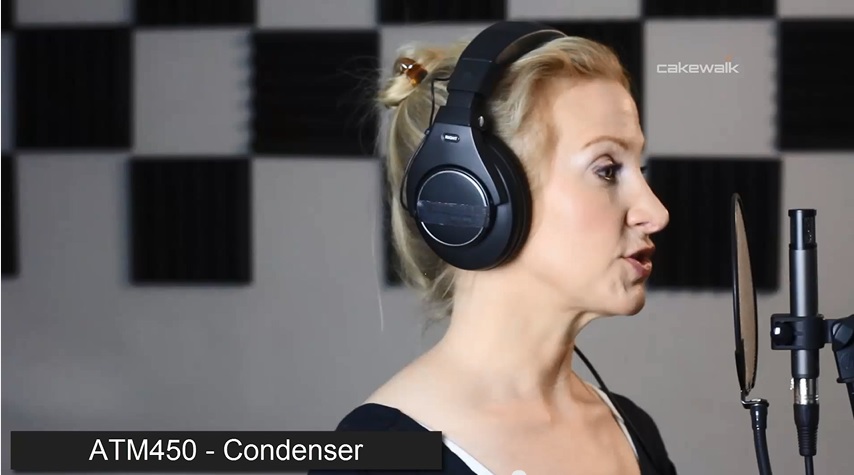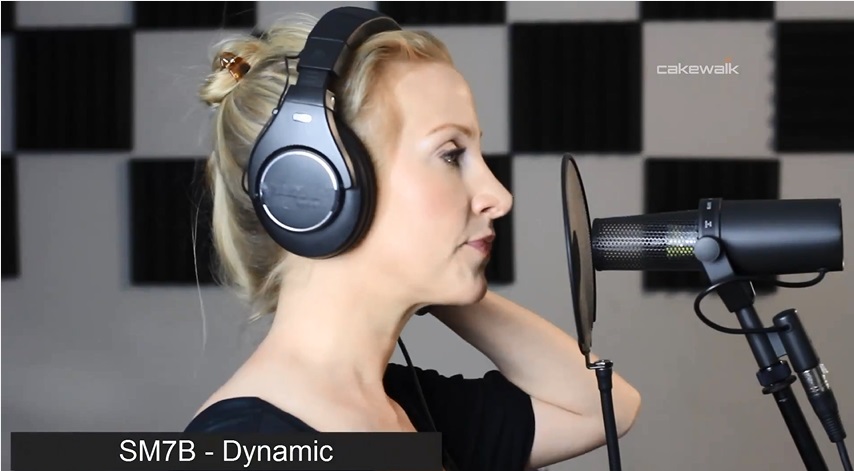Having a go-to microphone is always a great policy to have, but understanding the way specific microphones sound and perform is an even greater depth of knowledge every engineer or aspiring engineer should understand. To a trained ear – different microphones sound drastically different in character, response, and tone. The best way to start understanding these differences is easier thank you think. Start comparing microphones – and get nerdy about it!
Here’s our own Cakewalk microphone shootout displaying 5 different microphones on Ingrid Gerdes.
Common Misconception
There is never just one microphone that rules them all. In the end it comes down to preference and how a singer’s voice interacts with a microphone. We’ll be comparing 3 different types of vocalists with the microphones mentioned in this series so that you can get an idea of how these microphones really sound.
MD421
This microphone is considered a standard for placing on Toms because of it’s thick low end and boosted sibilant range. This makes it perfect for getting the needed thwack and resonance out of a tom drum. As you turn the microphone off-axis from the source less high end is retained. I’ve used this on guitar amps, kick drums, and thanks to this article: Vocals. You’ll notice that it adds a lot of color to the signal when you put this microphone up. If your vocalist has a naturally sharp voice then this microphone will only add to that. At a moderate price this microphone is great to have in your mic closet due to it’s flexibility and high SPL.
SPL – The maximum volume level at which a microphone can be exposed to before it fails or distorts. This is important to know in the event that you hear distortion in your mic signal but you’re positive that nothing in your chain is clipping. Your vocalist may just be too loud of singer.
If you want your vocals to cut through your mix or brighten up a rather duller-sounding vocal then check out the MD421 for it’s massive color and clarity.
MA200
An all around microphone for just about any scenario. This tube condenser microphone has a bit of boost in the mid-range giving it a boxier sound in comparison to other microphones in this post. It’s high SPL level makes it a candidate for bass amps, guitar amps, and drum sets. For most sources this microphone actually has a relatively natural and flat response making it a great choice for vocals. (You can also hear the MA200 used in front of a drum set here on number 7.)
If you need a well-balanced sound from your vocalist (or your vocalist is highly trained like the one in our post here) then give this microphone a try. It will capture everything you need from a vocal without being too genre specific.
PR22 UT
If you need a hot vocal microphone that won’t price you out then go with with the PR22 UT. This microphone is the most LIVE sounding dynamic microphone from repertoire that we’ve supplied in this post. The PR22 UT was made for the road and has a higher than average transient response time. When comparing this microphone you’ll hear how much more aggressive it translates the source. This is due to an innovative design that fuses elements of condenser and dynamic microphones – yielding higher response times without the weight of a condenser microphone.
ATM450
When searching for the right microphone always try to branch out and try new things. Sometimes you may surprised by what you hear. For me this was the first time trying out the ATM450 on vocals. This type of small diaphragm condenser microphone sounds similar to the PR22 UT. It has a nice fast response time while delivering a lot of detail to the high mid-range and sibilant frequencies.
By nature small diaphragm condensers are used on instruments like overhead microphone because they pick-up those higher frequencies and attenuate the boomy low-end at large distances. It makes for an interesting sound when applied to a vocalist of Ingrid’s style because her voice sits right in a range where this microphone could definitely work. There isn’t as much low-end in her voice, but this microphone adds a level of shimmer in comparison to the other microphones where her voice comes off too aggressive.
SM7B
Regarded as the number-one go to microphone for broadcast. The SM7B boosts and cuts frequencies in all the right places. It doesn’t add too much color the signal but captures just about any vocalist in their best light. This microphone’s response is similar to the 421 in that it has a lot of body and boosted highs. However this microphone is more controlled and doesn’t color the sound of the vocalist too much. If you’re looking for clarity, high SPL, and an aggressive sound then the SM7B is the right choice for you.
It’s used on Rock, Metal, and Hip Hop vocalists due to how well it captures loud and percussive vocals. Some use it on high hat, snare, and even as a front-of-kit microphone. You can check out the SM7B used on a drum kit here on number 8.
A-B’ing The Microphones
In addition to our Mic Shootout video, I’ve put together a quick video that showcases the microphones getting solo’d independently of one another from line-to-line:
Check out Part 2 here.
Check out SONAR X3 for 30-Days free







3 Replies to “Vocal Month: Picking the right Vocal Microphone Part I”
Comments are closed.